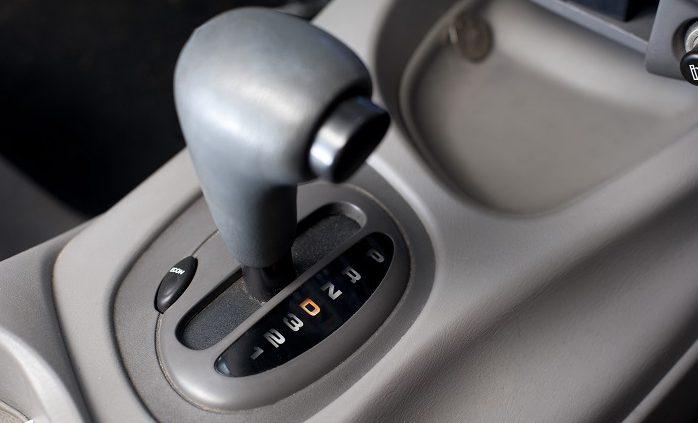Automatic transmissions have revolutionized the driving experience by providing convenience and ease, especially in heavy traffic. However, improper use can lead to costly repairs, reduced vehicle lifespan, and compromised safety. Understanding these common mistakes and knowing how to avoid them can save you time, money, and frustration. This guide highlights the most frequent errors drivers make with automatic cars and provides practical tips to keep your transmission in excellent condition.
1. Shifting Gears Without Stopping the Vehicle

One of the most prevalent mistakes is shifting from reverse to drive or vice versa without fully stopping the car. This habit puts immense strain on the transmission system and can lead to premature wear and damage. The proper way to switch gears is to bring the vehicle to a complete stop before making any transitions.
How to Avoid:
- Always ensure the car is stationary before shifting gears.
- Practice patience to protect your transmission and avoid costly repairs.
2. Resting Your Hand on the Gear Shifter
Many drivers develop the habit of resting their hand on the gear lever while driving. This seemingly harmless action can cause unnecessary pressure on the internal components of the transmission system, leading to wear over time.
How to Avoid:
- Keep both hands on the steering wheel while driving.
- Use the gear lever only when necessary to shift gears.
3. Using Neutral While Going Downhill
Some drivers shift to neutral when descending slopes to save fuel, believing it reduces engine workload. However, this practice reduces control over the vehicle and can increase the risk of accidents.
How to Avoid:
- Keep the car in drive while going downhill.
- Use engine braking along with regular brakes for better control and safety.
4. Ignoring Transmission Fluid Maintenance
Transmission fluid plays a crucial role in lubricating and cooling the system. Neglecting to check and replace the fluid as recommended can result in overheating and damage to the transmission.
How to Avoid:
- Regularly check transmission fluid levels and condition.
- Follow the manufacturer’s guidelines for fluid replacement intervals.
5. Overloading the Vehicle
Exceeding the recommended weight limit puts additional strain on the transmission, leading to overheating and potential failure. Overloading is particularly damaging during long trips or in hilly areas.
How to Avoid:
- Check the vehicle’s weight capacity in the owner’s manual.
- Avoid carrying unnecessary items to lighten the load.
6. Frequently Using Parking Without the Handbrake
Relying solely on the parking gear without engaging the handbrake can damage the parking pawl, a small pin that locks the transmission in place.
How to Avoid:
- Always engage the handbrake before shifting to park.
- This habit ensures the transmission is not under undue stress.
7. Driving with a Cold Engine
Immediately driving off with a cold engine puts extra stress on the transmission. Automatic transmissions need time to warm up to operate efficiently.
How to Avoid:
- Allow the engine to idle for a few minutes before driving, especially in cold weather.
- Drive at a moderate speed initially to let the transmission warm up gradually.
8. Neglecting Warning Signs
Ignoring symptoms like delayed shifting, unusual noises, or dashboard warning lights can lead to severe transmission issues. These signs often indicate underlying problems that require immediate attention.
How to Avoid:
- Pay attention to your car’s behavior and warning indicators.
- Consult a professional mechanic at the first sign of trouble.
9. Towing Improperly
Towing a vehicle incorrectly, especially one with an automatic transmission, can cause severe damage to the system. This mistake often occurs when the drive wheels remain on the ground during towing.
How to Avoid:
- Follow the manufacturer’s guidelines for towing.
- Use a flatbed tow truck whenever possible to prevent damage.
10. Accelerating Aggressively
Sudden acceleration from a complete stop can strain the transmission, leading to excessive wear and potential failure. This habit is particularly harmful when done frequently.
How to Avoid:
- Accelerate gradually to reduce stress on the transmission.
- Avoid revving the engine unnecessarily.
11. Ignoring Regular Maintenance
Skipping routine maintenance checks can lead to undetected transmission problems that worsen over time. Regular servicing helps identify and address minor issues before they become major concerns.
How to Avoid:
- Schedule regular maintenance appointments with a trusted mechanic.
- Keep detailed records of all service visits for future reference.
12. Using the Wrong Transmission Fluid
Using an incorrect type of transmission fluid can cause improper lubrication and overheating, leading to serious damage. Each vehicle requires a specific fluid type, as outlined in the owner’s manual.
How to Avoid:
- Always use the transmission fluid recommended by the manufacturer.
- Double-check with your mechanic to ensure compatibility.
13. Riding the Brakes
Constantly applying light pressure on the brake pedal while driving can generate excessive heat, affecting both the braking and transmission systems.
How to Avoid:
- Avoid resting your foot on the brake pedal unless necessary.
- Practice proper braking techniques to minimize wear.
14. Switching to Park Before the Car Stops
Shifting to park while the car is still moving can severely damage the transmission system. This practice puts immense stress on the parking pawl and can result in costly repairs.
How to Avoid:
- Always bring the vehicle to a complete stop before engaging park.
- Develop a habit of following proper parking procedures.
15. Ignoring Overheating Issues
Transmission overheating is a common cause of failure, often resulting from towing, heavy loads, or low fluid levels. Prolonged overheating can cause irreparable damage to the transmission components.

How to Avoid:
- Monitor the transmission temperature gauge, if available.
- Address overheating issues promptly to prevent further damage.
Conclusion
Avoiding common mistakes when using an automatic transmission is crucial for maintaining your car’s performance and longevity. By following these practical tips, you can reduce wear and tear, prevent costly repairs, and ensure a smoother driving experience. Prioritize proper maintenance, heed warning signs, and adopt safe driving habits to keep your transmission in top condition for years to come.

Leave a Reply